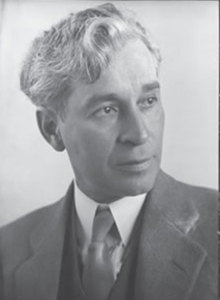 Palo Alto Stanford Heritage
Palo Alto Stanford Heritage 
Pedro de Lemos (1882–1954) was not educated as an architect, yet his buildings are the most creative and memorable in Palo Alto. His own home, Hacienda de Lemos was a labor of love, which he worked on for 10 years between 1931 and 1941. Believing that “Art is not for the talented, nor is it a luxury for humanity. Art can be applied to everything connected with life’s needs and civilization’s comforts”, he turned a personal fantasy into a magical 9,000 square foot Spanish Colonial Revival house. Of stucco and tile, this rambling 1– and 2–story building is arranged around a rectangular courtyard. The stucco surface is embedded with tile inserts and relief ornaments, while the triple, hand crafted roof tiles sheath a complex collection of gabled forms. Entry to the house is through a loggia which opens first to the courtyard. The loggia pillars are Byzantine revival and were salvaged from Stanford Chapel, destroyed in the 1906 earthquake. Similar carved column capitals are found throughout the house.
From the loggia, we enter the house proper, where carved wood, delicate archways, wrought iron and distinctive fireplaces abound. But it is the tiles of every shape, color and style that are the prime decorative element. Some were made in San Jose, some by de Lemos, his wife Reta and his students, but most were collected during his extensive travels in Mexico and the Mediterranean. The result is a visual feast. An example is an amazing tiled inglenook with a hearth projecting from the wall between built–in tile benches. It is reputedly patterned on El Greco’s kitchen fireplace in Toledo.
Another interior motif is the use of wood. Doors with delicate carved scenes, Moroccan windows, carved Spanish panels and varied hardwood floor patterns in each room, each signed by the craftsman who laid it. The two–story living room has heavy timber ceiling ridge beams pulled from San Francisco Bay and floors of South American tallow wood, a wood so rich in oils it needs no polishing. Together with balconies, grilled openings and alcoves, the Living Room is like a complex spatial sculpture.
The house reflects and embodies de Lemos himself. Born in Austin, Nevada, he was raised in Oakland, California and received his higher education at the California School of Fine Arts, the San Francisco Institute of Art and the University of California. He also studied at the Art Student’s League and Columbia University with noted figures Harry Stuart Fonda and Emile Gremke. His first teaching post was as a professor of design at Cal in 1913. He also worked as an illustrator and designer and began teaching classes in decorative design and etching at the San Francisco Institute of Art. He became director there in 1915. Stanford University Museum and Art Galleries invited him to become their director in 1918, a post he held until 1947. When appointed, he said “he wished to put on exhibition … material which would contribute to the lives of visitors and students by giving them beauty and enriching their everyday existence.” At Stanford, he taught classes and also served as the editor–in–chief of the School Arts Magazine. As editor, he transformed the way art was taught in American classrooms by providing graphic instructions to 45,000 teachers in Native American and Colonial arts and crafts. In addition to his renown in the art education field, De Lemos was an accomplished artist exhibiting at the Corcoran Art Gallery in Washington, D.C., the Art Institute of Chicago and at the San Francisco Exposition of 1915.
Hacienda de Lemos is as unique as its creator. The work of a distinguished artist, teacher, editor and author of journals and books, it stands as an outstanding work of architecture. It alone ensures the legacy of Pedro de Lemos. ©
PAST, March 1, 2013
E-mail us at either webmaster@pastheritage.org or president@pastheritage.org.
![]() Palo Alto Stanford Heritage—Dedicated to the preservation of Palo Alto's historic buildings.
Palo Alto Stanford Heritage—Dedicated to the preservation of Palo Alto's historic buildings.
Copyright © 2015 Palo Alto Stanford Heritage. All rights reserved.